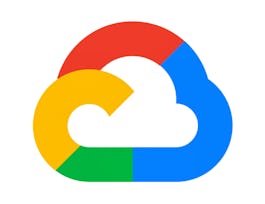In this course you will learn about Cloud Spanner. You will get an introduction to Cloud Spanner, contrasting it with other Database products to understand when and how to use Spanner to solve your relational database needs at scale. You will learn how to create and manage Spanner databases using various tools on Google Cloud, learn to optimize relational schemas with Spanner’s distributed database model in mind, interact with your Spanner databases using the Spanner APIs, integrate Spanner with your applications, and learn how to use other Google tools for administering Spanner databases and managing your data.



What you'll learn
Build scalable, managed, relational databases by using Cloud Spanner.
Create and manage Cloud Spanner databases by using the CLI, Terraform, Python API, and the Google Cloud console.
Program and run queries and transactions by using the Cloud Spanner API.
Integrate Cloud Spanner with applications.
Details to know

Add to your LinkedIn profile
6 assignments
See how employees at top companies are mastering in-demand skills


Earn a career certificate
Add this credential to your LinkedIn profile, resume, or CV
Share it on social media and in your performance review

There are 7 modules in this course
A brief introduction to the course structure, and it's contents.
What's included
1 reading
This module discusses the core concepts and aspects of Cloud Spanner. You learn about the history of Cloud Spanner, understand how Cloud Spanner relates to the CAP theorem, and explain a variety of Cloud Spanner use cases.
What's included
3 readings1 assignment
This module discusses the options for architecting Spanner instances based on location, capacity, availability, and cost. You will learn how to create Spanner instances by using the Google Cloud console, Google Cloud CLI, Terraform, and Cloud Spanner databases by using SQL.
What's included
1 video3 readings1 assignment2 app items
This module discusses the options for optimizing database schemas to perform optimally in Spanner. You learn how to choose the appropriate primary key for your data. You learn how to manage relationships with primary and foreign keys and with interleaved tables.
What's included
3 readings1 assignment2 app items
This module introduces the methods for authenticating users and applications that connect to Spanner databases. You will learn how to create applications that connect to Cloud Spanner by using Google Cloud client libraries and Python. You optimize queries by using indexes, strong reads, and stale reads. You also learn how to manage transactions in Cloud Spanner.
What's included
4 readings1 assignment2 app items
This module introduces the steps for deploying Cloud Spanner applications to Google Cloud serverless runtimes. You also learn how to migrate data to and from Cloud Spanner by using Dataflow jobs and Apache Beam.
What's included
2 readings1 assignment2 app items
This module introduces administering Cloud Spanner instances. You learn how to backup, restore, import, and export data. You learn how to modify database schemas with no downtime. You also learn how to monitor your Cloud Spanner databases and applications.
What's included
4 readings1 assignment2 app items
Instructor

Offered by
Why people choose Coursera for their career




Recommended if you're interested in Information Technology

Google Cloud

Open new doors with Coursera Plus
Unlimited access to 10,000+ world-class courses, hands-on projects, and job-ready certificate programs - all included in your subscription
Advance your career with an online degree
Earn a degree from world-class universities - 100% online
Join over 3,400 global companies that choose Coursera for Business
Upskill your employees to excel in the digital economy





